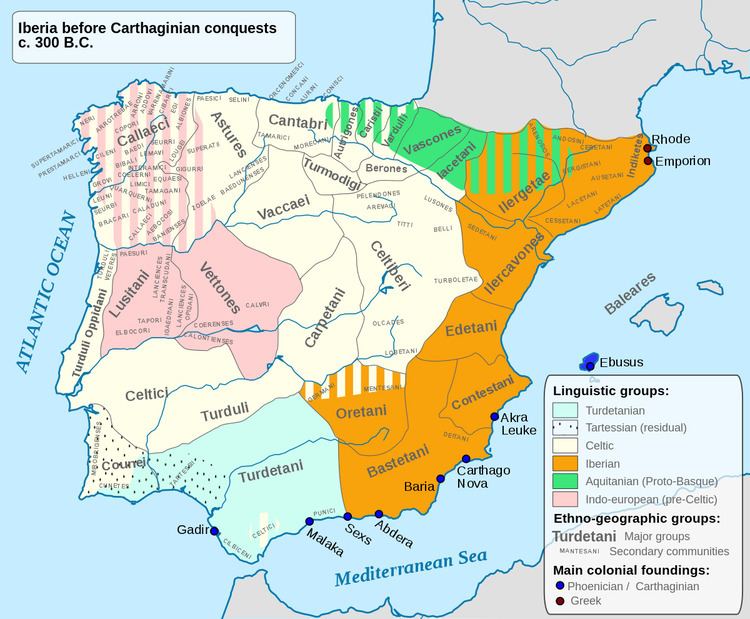This is a list of the Pre-Roman people of the Iberian peninsula (the Roman Hispania, i. e., modern Portugal, Spain and Andorra). Some closely fit the concept of a people, ethnic group or tribe. Others are confederations or even unions of tribes.
(Text) CC BY-SA

